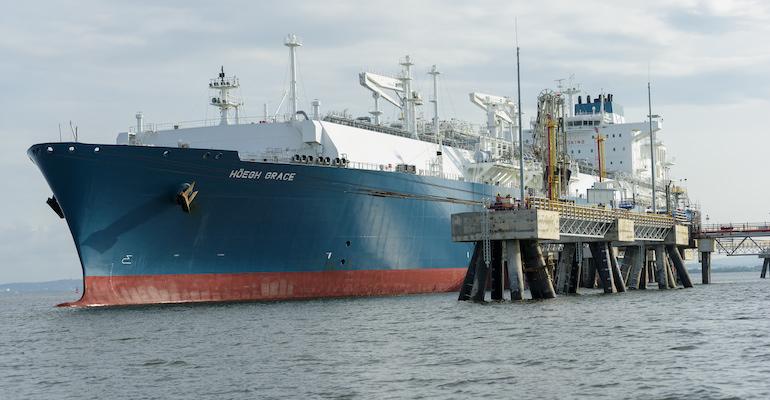Brokers Poten & Partners European demand estimates have been revised dramatically upward by events in Ukraine with European consumers scrambling to reduce their dependence on gas from Russia. Poten’s forecasters have increased their views of European imports from around 85 million tonnes per annum (mta) in the mid - late 2020’s up to 110 mta, with some 18 mta - more than half of this growth, tied to consumption in Germany, predominantly, and Poland.
These countries, along with other European cargo receivers, are lacking the required facilities for receiving cargoes and there is a major role FSRUs to plug the gap.
Speaking on an LNG webinar Poten analyst Kristen Holmquist said: “In Germany alone, there are eight potential new projects, with two of those being onshore projects- but the rest are FSRUs.”
In talking about Europe more broadly, she said, “There’s a lot of activity, a lot of FSRUs being looked at…they are easier to start up, especially if you already have a port. It’s easier to ramp those up, and that’s what the region is looking for.” Noting the bigger decarbonisation trends on the horizon, she said, “It doesn’t have to be permanent; it’s easier to remove if renewables start to pick up more rapidly.”
Answering a question about what the future in Northwest Europe holds for FSRUs versus not yet constructed regasification terminals, Holmquist responded: “Not all these FSRU’s exist; we would be constructed new ones.” She said that in the longer term, out to 2032, there would be a need for onshore regas facilities.
However, turning again to what she called a “push pull with decarbonization” she asked, rhetorically, “Do you want to build an onshore regas terminal onshore if by 2040 you are not supposed to be using it anymore?” She said, “That’s why FSRUs are more attractive; when the contract is over, they can pull up their anchor and sail away…” to another engagement.
Recent concerns about reduced supplies from Gazprom have driven gas prices higher; however, short term cargo movements depend on price differentials between regions- also known as “arbitrage”. Greater price disparities enable vessel charterers to pay more for vessel hires.
Jefferies stock analyst Omar Nokta wrote, in a late July commentary to investors, that: “Higher prices are supportive of overall LNG shipping movements with liquefaction plants operating at high capacity, but tightened regional arbitrages have reduced spot shipping requirements following the latest price surge. Spot TFDE shipping rates are assessed around $44,000 per day as compared to 12-month time charter rates above $100,000 per day.”
Copyright © 2024. All rights reserved. Seatrade, a trading name of Informa Markets (UK) Limited.
Add Seatrade Maritime News to your Google News feed.  |

